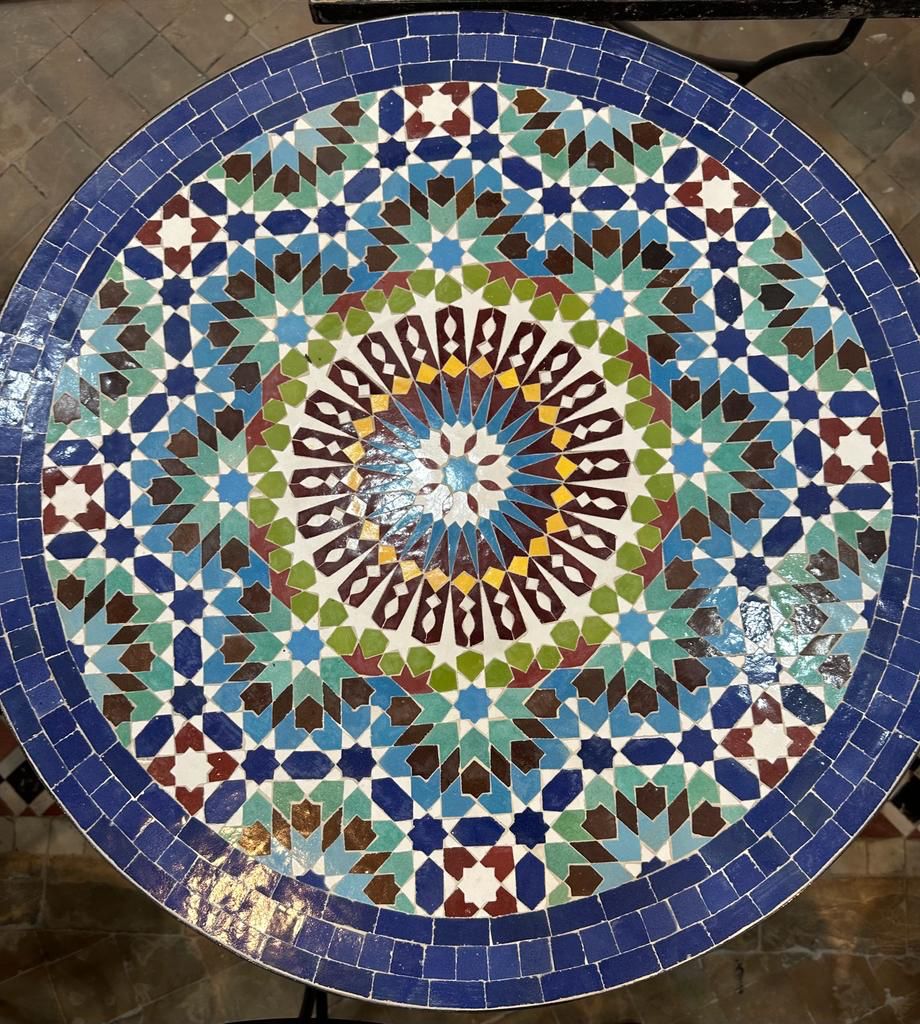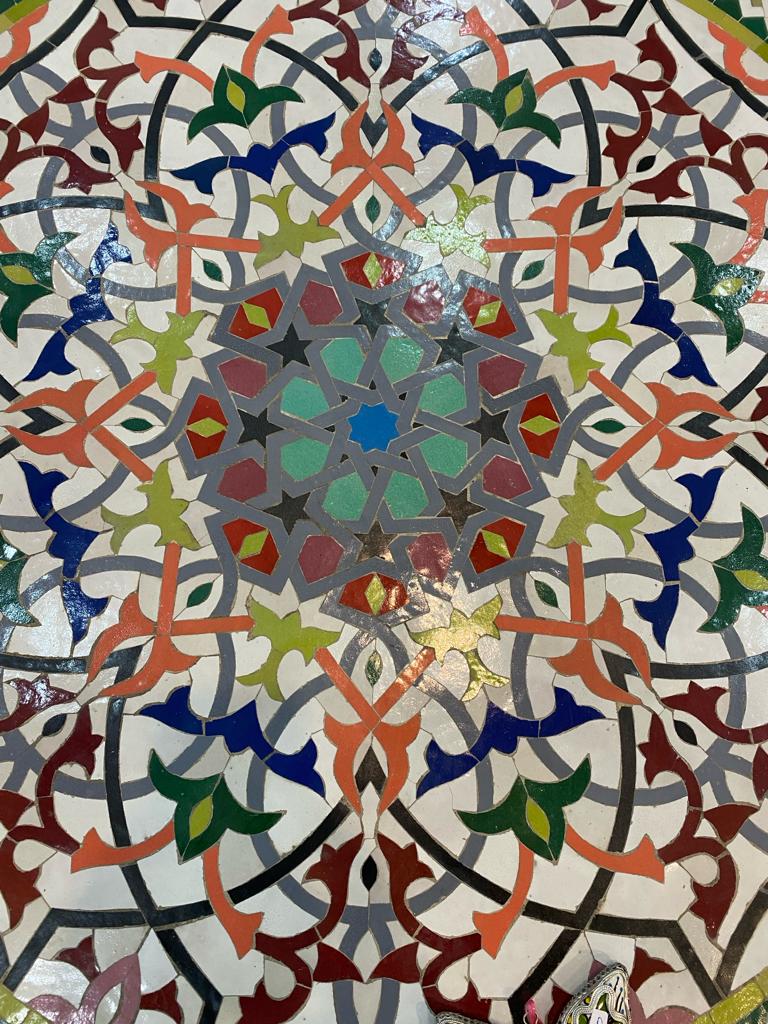One of the most striking features of Moroccan architecture is the Zellij, the creation of an intricate mosaic design using hand-cut, glazed tiles. Skilled artisans assemble the jigsaw-like tiles to form geometrical patterns of great complexity. Each piece in the mosaic has a different name, describing either its shape or its function: these include squares, triangles, stars, diamonds, polygons, crosses, knots, forks and candles. Colours tend to be simple: blue, green, white, yellow, brown and black. The four elements, fire, water. air and earth are represented by these colours.

The art form dates back to the 10th Century in North Africa and Andalusia and arrived in Spain and the Maghreb (Northwest Africa) in the first half of the 14th century. The technique remains almost unchanged today. The Moroccan Zellij maker starts with a square glazed clay tile about 10 cm square. Lines are drawn on the glazed side and the craftsperson breaks it into pieces along these lines, using a small hammer. An experienced cutter can cut up to 400 pieces of Moroccan tile each day. These tiny, geometric tiles are then are set in a plaster base to form wonderfully intricate patterns.

The craftsman behind this ancient art are known as maallems. A maallem will spend years learning their craft which is passed down from generation to generation. In many ways Zellij (sometimes referred to as Zellige or Zelige) is a blend of mathematics and art. Islam forbids the portrayal of living forms, so geometric patterns were created as a way of adding embellishment to the mosaic. It is said that almost hypnotic effect created by the patterns provides inspiration for meditation and religious contemplation.
Today, Moroccan tilework decorates the walls of stylish hotels, hammams, swimming pools and fountains. If you walk around the grounds of Palais Amani you’ll see the six-pointed Star of David symbol in some of the exquisite hand-cut ceramic Zellij tiles and carved plasterwork of the building. You can also buy tiles in Fes’s medina to take home to adorn your interior, injecting a little of the magic of Morocco in the form of the glorious Zellij tile.


